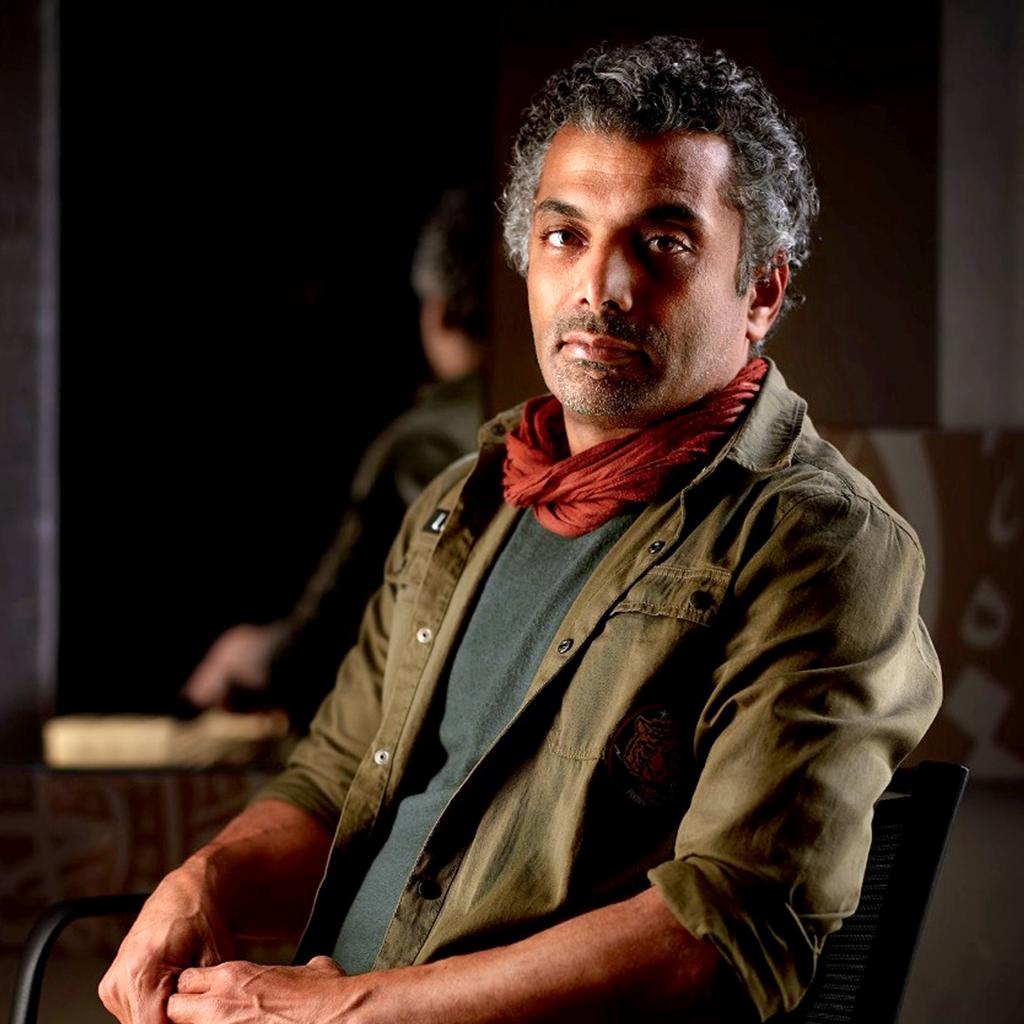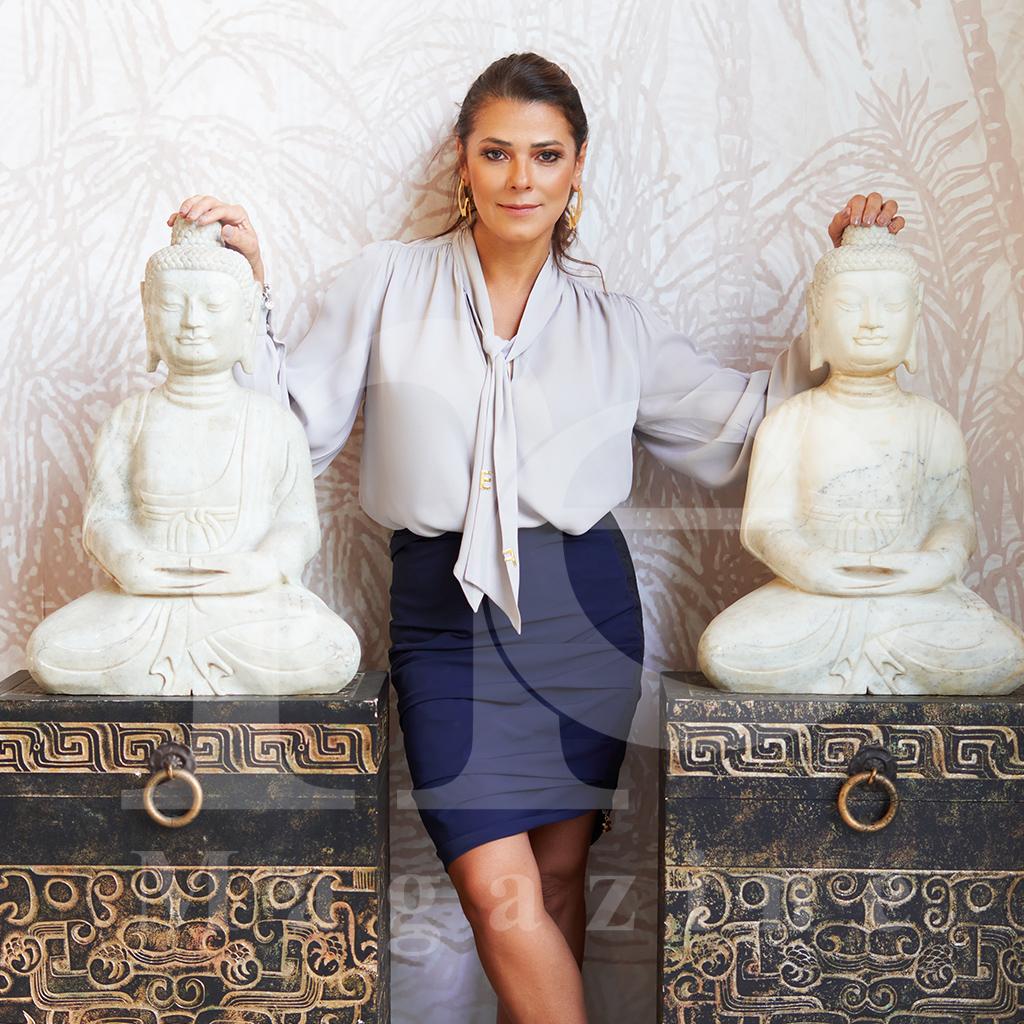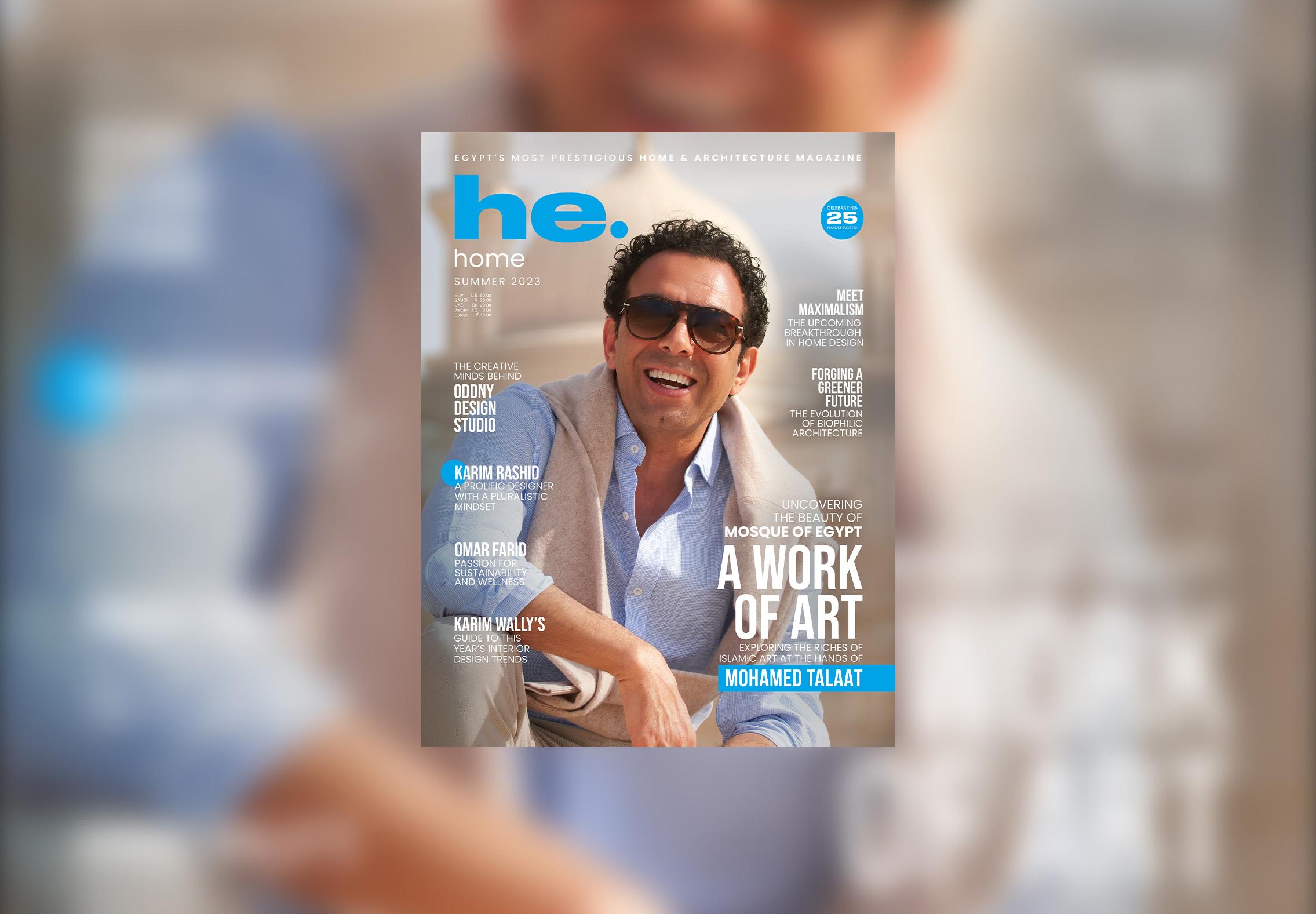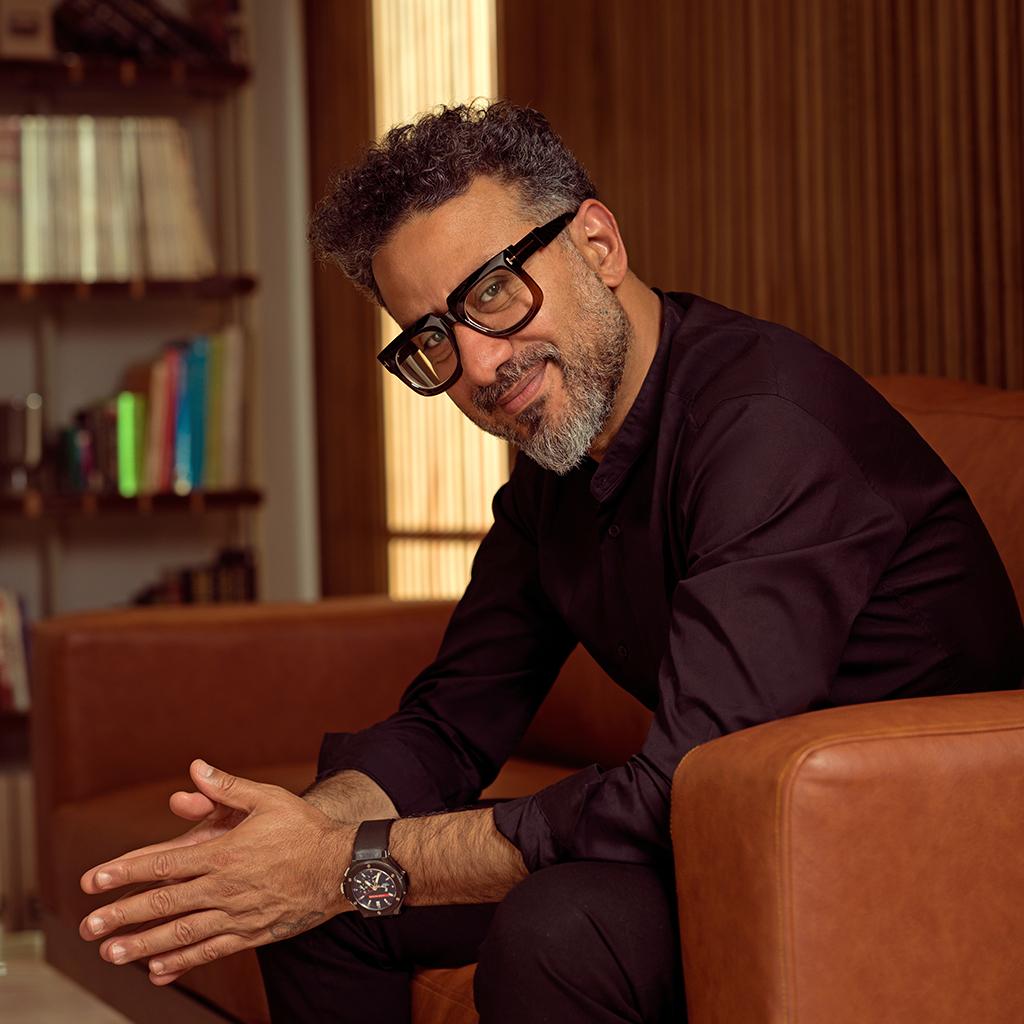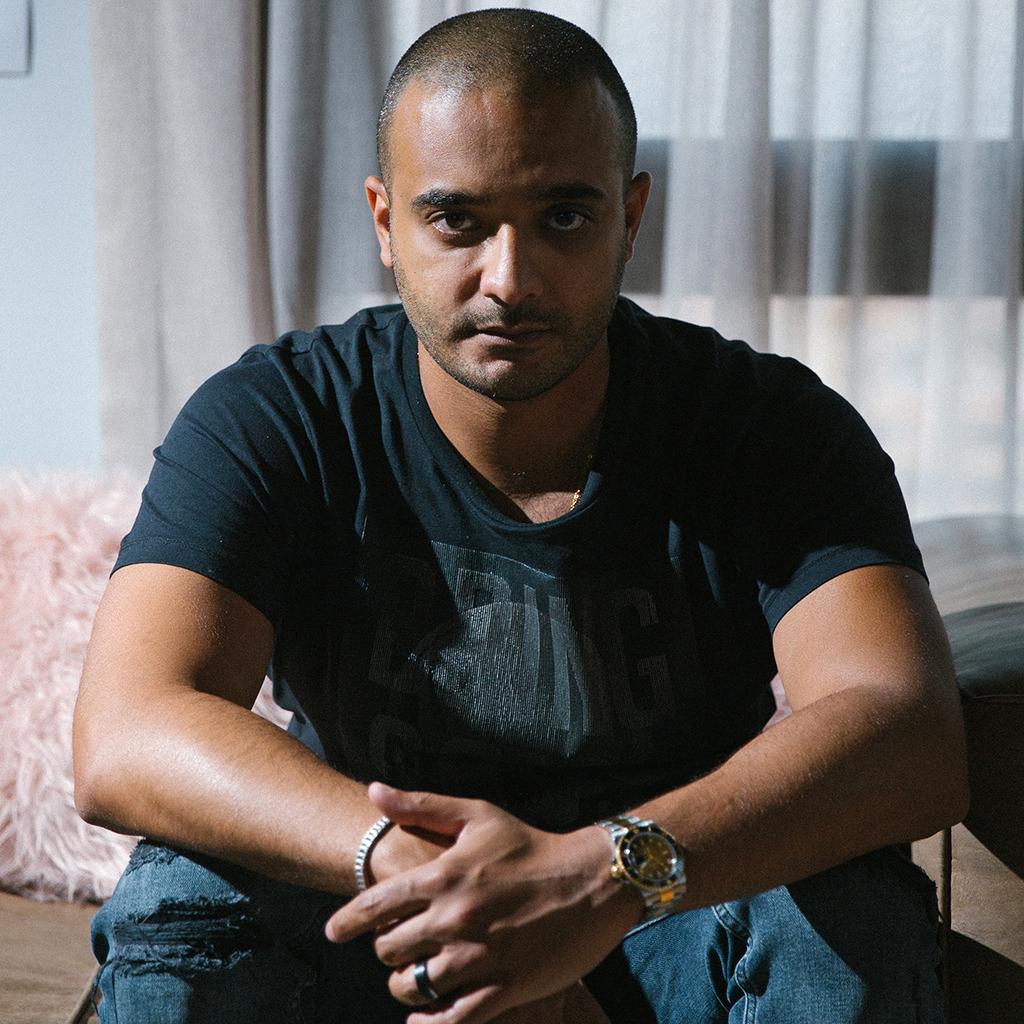
Written by: Yasmeen Ebada
Date: 2020-12-02
The interior designer for celebrities
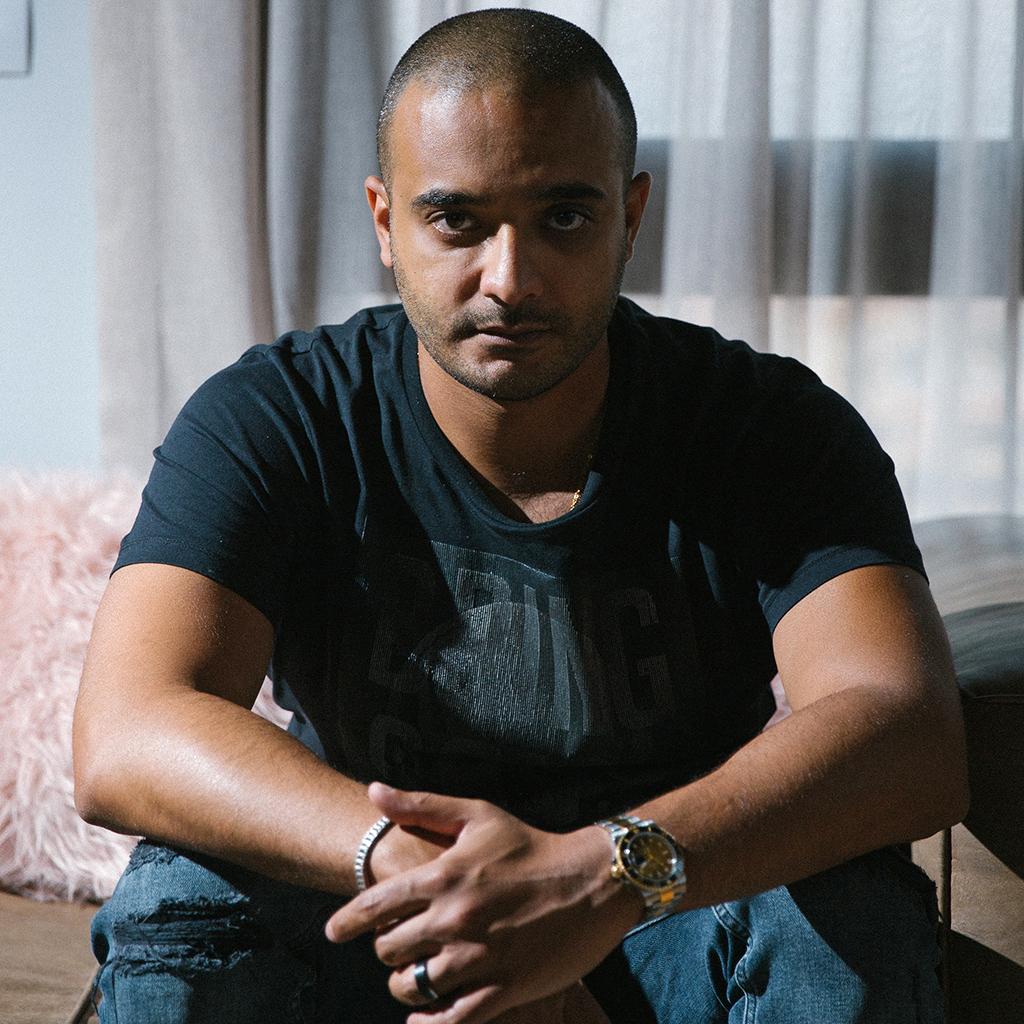
Growing up, Ahmed Hussein had no idea that he wanted to study engineering. However, he was certain of one thing.
“There weren’t any obvious inclinations that I wanted to become an interior designer, but I loved to draw. This was the only thing that I liked during school,” Hussein said. “I wasn’t doing it professionally. It was a hobby.”
The only thing that Hussein knew about engineering was the example that his cousin provided. His cousin graduated with a chemical engineering degree and worked as a petrol engineer. He would work for a month at a time and then take off for a month. For someone who just graduated from high school, this sounded like a dream job to Hussein.
“I wanted to be like him. He was like a role model,” Hussein said. “I liked the idea of traveling, and the idea of using a drilling machine was fascinating to me.”
It was settled. Hussein would take his cousin’s path. He took all of the mandatory engineering classes during his first year of engineering school at a private university in Egypt. When it was time to declare a concentration, during his second year, he chose chemical engineering.
Luckily for Hussein, the engineering drawing class professor ran into him as soon as he declared his concentration. Impressed by his drawing skills, the professor assumed Hussein chose architectural engineering. The professor talked to Hussein for at least two hours to convince him to switch his concentration.
“He told me I was one of his best students,” Hussein said.

The professor explained what classes he was going to take and what the architectural engineering sector in the job market looked like. Hussein’s grades proved he belonged in the architectural world. He got his highest grades in the engineering drawing classes and got satisfactory grades in the chemical engineering and physics classes. It was a no brainer, and the professor knew it. He had no intention of leaving until Hussein changed his mind.
It’s a good thing he did pester him. Hussein was sold, and he switched his concentration to architectural engineering.
“Within the first two months, I knew that this was where I belonged,” Hussein said.
During his third year, he got an opportunity to work for a magazine. After studying and taking classes all day, he would then go to the office and work on designing the page layouts, using Photoshop, for the magazine. This was his first taste of learning how to do design work in the real world.
“It was exhausting, but I enjoyed it. As a college student, I felt like I was doing something cool. I was happy with the extra money I was making. I was able to buy what I wanted. It was gratifying,” he said.
He quit working for the magazine during his fourth year because he needed to focus on his graduation project.
Upon graduation, in 2008, he worked as an architectural engineer, where he did freelance projects and worked for different employers in the engineering field for approximately two years. He admitted that he learned a lot about engineering on a broader scale, but he was not learning design. He also learned how to do technical drawings, but it was not what he wanted. He knew he wanted to be an interior designer.
“Working on technical drawings taught me about construction and building on a larger scale,” Hussein said.
However, he was unfulfilled. He wanted to run his own firm. He decided to take the plunge, and he created a Facebook page, and he posted all of his work.
He finally got the phone call he had been waiting for. Someone wanted Hussein to design his apartment and to do the construction work from start to finish. This was his first solo project. It was a small apartment in Al Nozha Street.
He knew that he wanted to solely focus on design, but he didn’t have any employees since he just started. He did everything, including the accounting work, the interior design work, the construction work, the technical drawings, and the site supervision.
“I was the first one to arrive on the site and the last one to leave,” he said.
He was running the entire show.
This project put him on the map in the interior design world.
“Even though it was a small apartment, I am still proud of the work that I executed,” he said. “I was the happiest person on the planet.”
For four to five years, this is what his life looked like. The more projects he executed and posted on his Facebook page, the more phone calls he got.
In 2015, he had another turning point. Hussein built a duplex apartment, his first duplex project, in Mountain View, a private property development company, that gained a lot of attention. Everything from the design work to the execution was spectacular.
“It had new ideas, and we finished it in an exceptional time frame. We didn’t have any problems,” he said. “As soon as we photographed it and posted it on Instagram, we started getting a lot more phone calls. People were impressed.”

At this point, this was his biggest project.
“This project helped people realize that my design ideas are a bit unorthodox,” he said.
His world expanded tremendously. He started getting all types of residential projects, including villa projects for the first time.
In 2019, he had another turning point. He designed Yasmine Sabri’s house.
The Egyptian actress’s house, finished in 2020, put him in a whole new market.
“I became known as the interior designer for celebrities. The kind of clients that I was getting changed after those projects. My project scale was growing,” Hussein said.
He designed Amr Adib and Mofida Shiha’s house as well. Adib is an Egyptian journalist and television presenter, and Shiha is an Egyptian television presenter.
His partnership with a construction firm in 2016 allowed Hussein to take on more projects. They wanted to separate every area.
“At this point, I truly believed that I was a designer, and construction and electromechanical engineering are separate specialties,” he said. “The one-man show is a losing strategy.”
Since they were getting a lot more projects, they needed a bigger design team. In the earlier stages of COVID-19, Hussein was working on growing his team and expanding his office space. They took advantage of restructuring the company, including adding an accounting office, a technical office, and growing the design team.
Hussein has focused mainly on residential projects, but since his company has grown, he has started taking on more commercial projects, including executing an office space for Merak, a real estate consultancy company.
He prefers residential work; he says it’s his “game”.
“I feel like I am playing a game while working on residential projects. I pretend like I am the one who is going to live in those spaces,” he said. “My ideas for each house vary, and I try to distribute my ideas to each space while fulfilling my client’s needs.”
He is currently working on Jumana Mourad’s house. The Syrian actress’s house in Allegria Residence should be finished next year.
Hussein does not have a personal preference for a design style, but he does love natural materials and he likes artistic work. He strives for, as he calls it, “creative luxury”.
“I like to create luxurious work from nothing,” he said. “Even if I am surrounded by simple materials, I like to be sitting and feeling the luxury around me.”
He likes to mess around with the materials. He likes both wood and marble. Wood is easy to design and easy to execute from, he said. He also likes its natural texture. He describes marble as “luxurious”.
“To me, marble’s color and shape is something not created by human beings. Sometimes I feel like marble was created by God,” he said.
The design has to be comfortable. The space should burst with high-quality materials.

“The work I produce has to have a soul. For example, a modern interior with a classic or country soul,” he said.
Hussein also likes to change his designs and likes improving and working in all aspects of interior design styles, including modern, classic, and baroque.
“A lot of engineers and designers fall under the trap of working on one style,” he said. “People get bored because all of his or her work is the same.”
He gets scared of repeating his work.
“My new project has to be different than the one before,” he said. “Every designer, without doing it on purpose, can get affected by certain ideas, and they find themselves repeating the same projects. A designer has to do something out of the ordinary.”
Sometimes the final product will come out nicely, and sometimes, when you are changing your skin, it won’t, but that is how you grow as a designer.
“I hate the comfort zone,” he said.
According to Hussein, one of the challenges within the interior design industry in Egypt is the poor-quality of most local materials that are necessary for the interior and exterior finishing works, such as marble or decorative wood. Egypt lacks high-quality local manufacturing of products that are essential for the finishing works. Therefore, the finishing industry depends on imported items. This leads to an increase in the overall cost of the finishing works.
Another challenge is the lack of experienced and well-trained laborers in Egypt who are needed to execute fine finishing works. Egypt lacks laborers with educational backgrounds.
“It is like a war to try to find a laborer who can execute fine work,” Hussein said.
Despite their success, especially locally, Hussein wants to expand globally. They are starting to get international clients. They can accept those global projects because their team has grown. They have already done design work for residential projects in the United States, China, India, Canada, Europe, and the United Arab Emirates. Hussein said that the five-year plan is to develop a private department in charge of international projects.
When he first started, he had difficulty with communication and interacting with people in general. In this field, being able to communicate with the client is imperative because the designer spends so much time with people. It took him some time to understand that humans have different personalities. He started reading about psychology to try to understand how to interact with specific personalities.
“I learned to interact and communicate with people in a way that suits them,” he said.
Understanding a little bit of psychology also helps him reflect on how he interacts with a client in a specific instance.
“It helps me understand my reactions. For example, there are some clients that you can’t read, and you don’t know if they like or dislike the design. Those clients usually have a poker face. To be able to get a reaction from them, I have to adjust my communication style accordingly,” he said. “Clients need to feel comfortable while interacting with me.”
Psychology has also taught him how to protect himself from getting offended in this profession. It taught him to not take things personally.
“I think about what I am going to say before I say it,” he said.

A successful interior designer is also a good salesperson and marketeer, according to Hussein.
“Part of my profession involves getting to know intimate details about my clients’ lives. For example, their eating habits, their fashion style, and which side of the bed they like to sleep on. My clients become my friends,” he said.
Hussein believes that executing a successful project, small or big, is the definition of success.
“I’m addicted to success. As soon as I am done with a project, I cannot wait to start a new one,” he said. “I feel like I should do something bigger than what I did previously. It feels like infinity, but that is how you achieve success.”
According to Hussein, this job requires self-improvement.
“If a guitarist stops playing for a day or so, their fingers get heavy. They become rusty. Interior design is similar in that sense,” he said. “If I believe that I am the best, then I won’t improve. I tell myself every day that I am not a strong interior designer.”
Hussein tries to give his clients tips on the usefulness of different household goods.
“I could advise them on things that I have seen that I believe are useless. I could tell them to avoid certain things because it is not functional,” he said. “I advise my clients based on what I have seen in previous projects.”
Growing up, Hussein didn’t have a mentor, and he didn’t want any advice from anyone.
“I learned to not listen to anyone. If you believe in something, that is all that matters,” he said. “An unsuccessful person wants everyone else to be unsuccessful.”
His advice for younger interior designers is to stay focused on your goals, don’t listen to anyone and to work on yourself.
“Don’t give up. At some point, you will fail, and it will make you want to quit. You’ll feel at times that you aren’t good enough or that this job is too hard. However, keep pushing because there is always light at the end of the tunnel,” he said. “Keep moving forward.”
Hussein doesn’t execute houses to fulfill an artistic need.
“My job is to make my clients’ lives easier. I create a space that impacts my clients’ lifestyles,” he said.
In his free time, Hussein likes to play the guitar, go to the gym, and, like any interior designer or engineer, he loves to travel. He is fond of Paris, Vienna, and Spain because of their beautiful architecture. He enjoys visiting Greece because of the country’s history and culture.
“Traveling is my escape,” he said. “Seeing beautiful architecture gives me inspiration for new designs and ideas.”
For more information on Hussein’s projects, visit his website.
